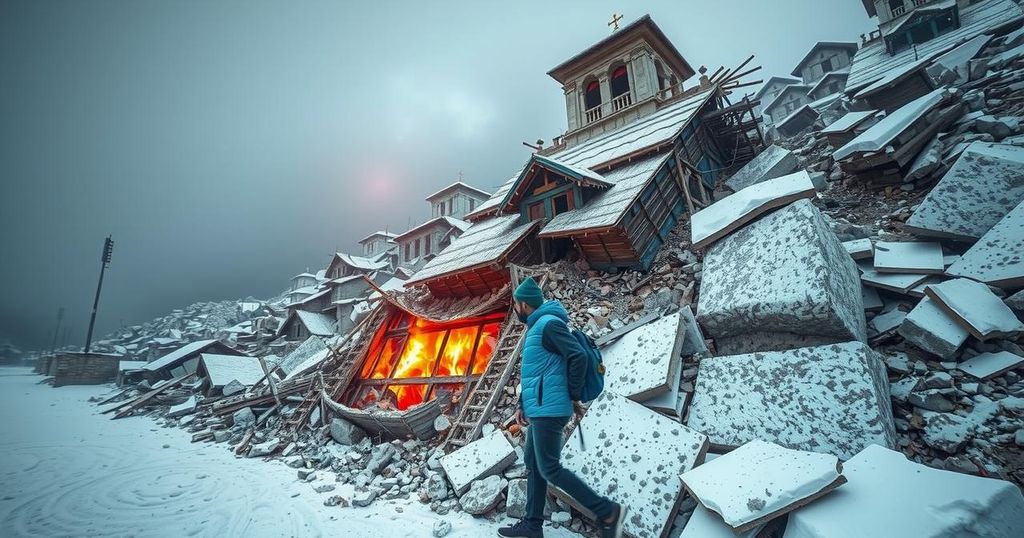A 6.8-magnitude earthquake has struck Dingri County in Tibet, leading to at least 53 fatalities and 62 injuries. The tremor has triggered numerous aftershocks impacting parts of Nepal and India, with evacuations prompted but no reported casualties in these regions as the Chinese military mobilizes relief efforts.
A powerful earthquake measuring 6.8 on the Richter scale struck Dingri County in Xigaze, Tibet, at 9:05 AM, leading to the tragic loss of at least 53 lives and leaving 62 individuals injured. The quake, characterized by its shallow depth of just 10 kilometers, caused widespread destruction, including the collapse of buildings as reported by state media. In response to this disaster, the Chinese military has mobilized for relief efforts, deploying drones and preparing ground forces for immediate assistance.
Following the initial tremor, the Xizang region experienced several aftershocks, with magnitudes ranging from 4.3 to 5.0. These tremors affected areas extending to Nepal’s capital Kathmandu and Sheohar district in India, necessitating evacuations among residents. Fortunately, no casualties have been reported in these regions thus far. Authorities are maintaining vigilance as seismic activity continues in the area.
Tibet is a seismically active region, often witnessing significant earthquakes due to its tectonic position. The recent earthquake in Dingri County demonstrates the ongoing risks faced by inhabitants in this part of the world. Following the earthquake, an extensive emergency response materialized, led by the Chinese military, indicative of the potential for severe destruction such seismic events can produce. Additionally, the repercussions of such disasters often impact neighboring countries, necessitating regional vigilance and preparedness.
In summary, the recent 6.8-magnitude earthquake in Tibet has resulted in significant casualties and injuries, prompting swift military response for relief efforts. The series of aftershocks affecting nearby regions underscores the continuing seismic risks present in Tibet. The situation remains fluid as authorities monitor further developments, ensuring safety and preparedness among residents in impacted areas.
Original Source: www.devdiscourse.com






